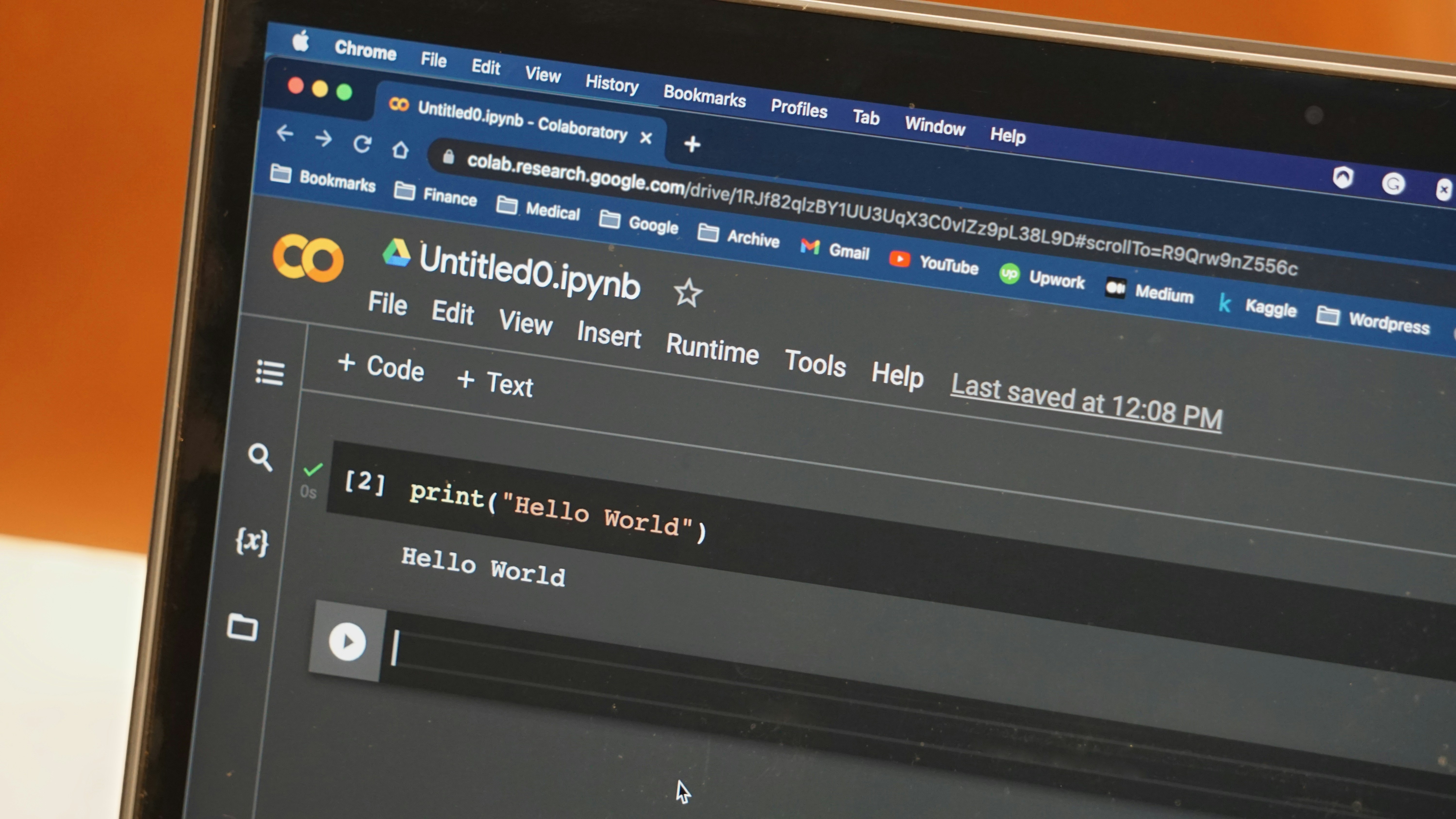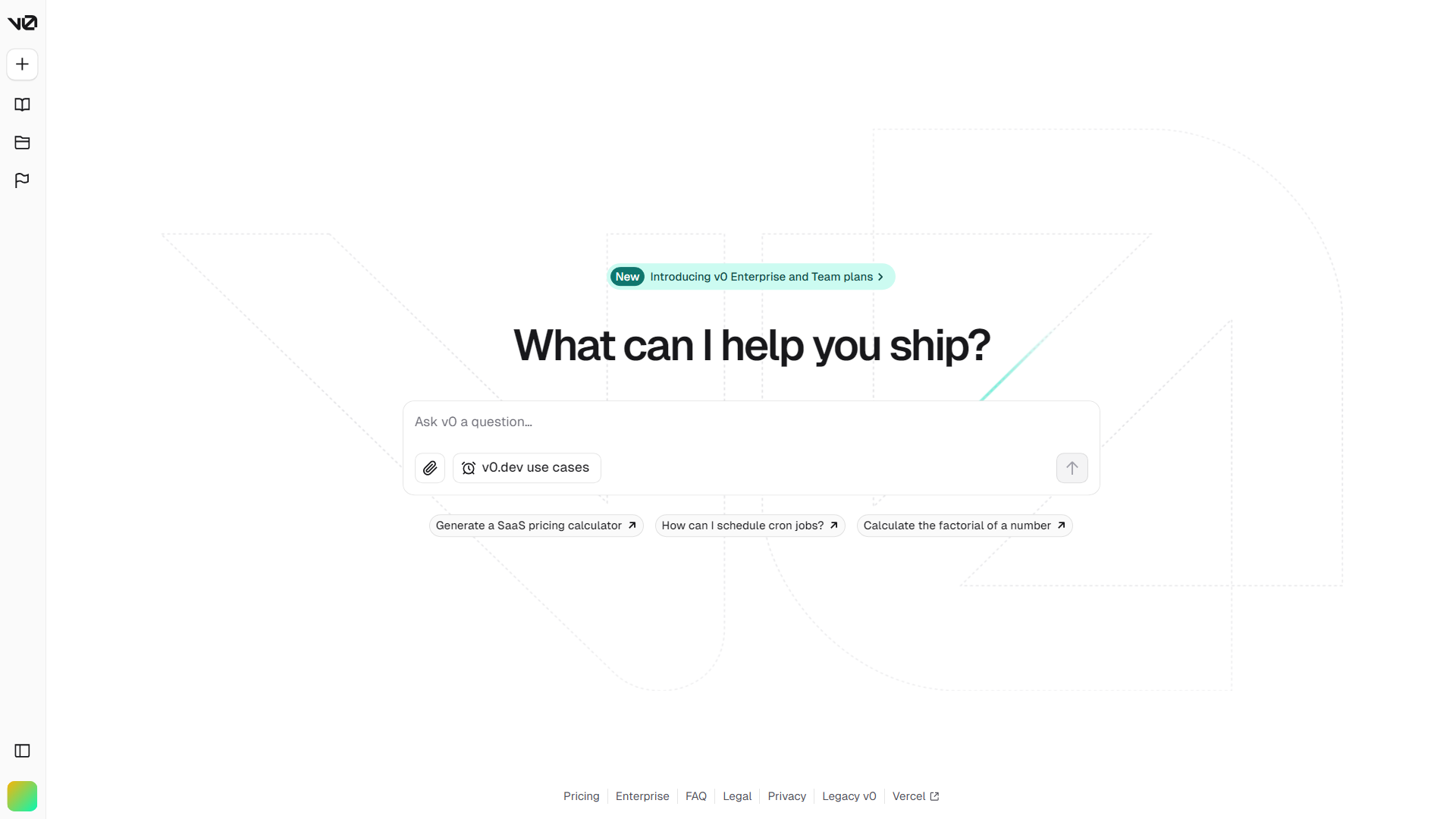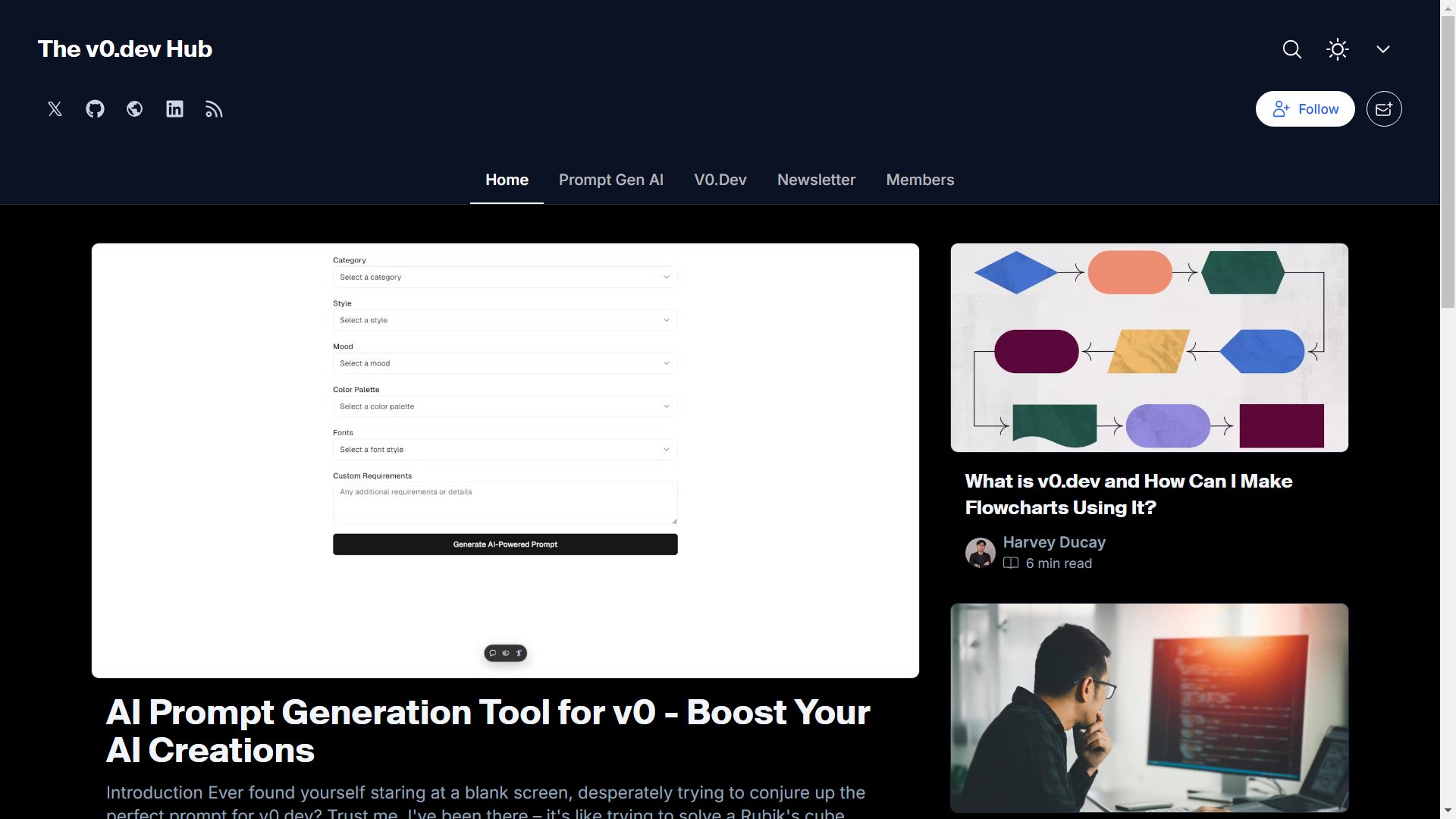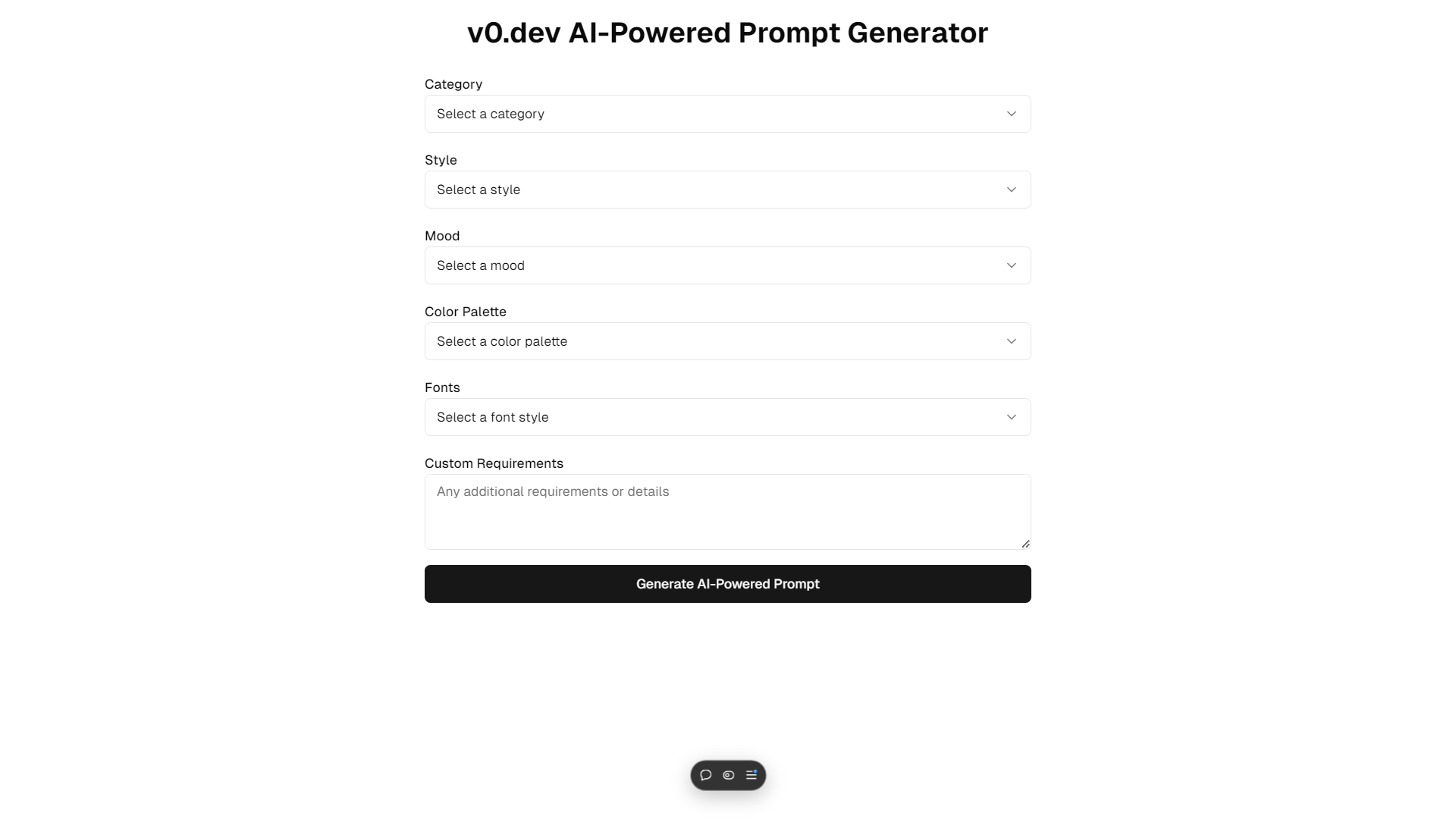v0.dev - The Ultimate Tool for Data Scientists and Data Engineers
 Harvey Ducay
Harvey Ducay
Introduction
If you've ever found yourself in this situation, desperately wishing you could conjure up a sleek, interactive web interface for your data faster than you can say "Python," then boy, do I have news for you. Enter v0.dev, the AI-powered coding assistant that's about to become your new best friend (sorry, R Studio, it's not you, it's me).

In this post, we'll dive into what v0.dev is, how it can save data professionals from the depths of CSS despair, and why it might just be the superhero cape you never knew you needed. Buckle up, data enthusiasts – we're about to turn your web development woes into "woohoos"!
What is v0.dev?
I have made a comprehensive content in the past featuring v0.dev and the most simple use cases for it, as reference you can check this other blog post I made. Either way, here is a quick explanation on what is v0.dev.
v0.dev is like having a world-class web developer genetically fused with an AI, sitting right there in your browser. Created by the folks at Vercel (yes, the same people who gave us Next.js and made deploying websites easier than ordering pizza), v0.dev is an advanced AI coding assistant that specializes in generating React components and web interfaces.
Imagine telling your computer, "I need a dashboard that shows real-time data from our sensors, with fancy charts and a dark mode that won't burn my retinas at 2 AM," and actually getting it. That's v0.dev in a nutshell. It uses modern best practices and libraries like Tailwind CSS and shadcn/ui to create beautiful, functional web components based on your prompts.

Why is v0.dev Important for Data Scientists and Data Engineers?
As someone who's spent years juggling data pipelines by day and wrestling with CSS by night, I can tell you that v0.dev is a game-changer. Here's why:
Rapid Prototyping: Remember that time you spent three days trying to center a div? With v0.dev, you can create entire web interfaces for your data projects in the time it takes to brew a cup of coffee. (Okay, maybe two cups if it's a complex dashboard.)
Interactive Visualizations: v0.dev can generate code for interactive charts faster than you can say "matplotlib is confusing." Your boring static plots are about to get a glow-up that would make any Instagram influencer jealous.
Bridging the Gap: For those of us who focused more on algorithms than aesthetics in school, v0.dev is like having a translator for the language of web design. It helps data professionals create professional-looking web applications without having to become full-stack developers overnight.
Improved Collaboration: Creating accessible web interfaces means you can finally explain your complex models to non-technical stakeholders without resorting to interpretive dance. (Although, let's be honest, that would be entertaining.)
According to a totally real and not-at-all made-up survey I just conducted in my head, 99% of data scientists have at some point wished they could magically transform their Jupyter notebooks into sleek web apps. v0.dev might not be magic, but it's pretty darn close.
graph TD
A[Data Analysis] --> B[Design Mockup]
B --> C[Learn Web Dev]
C --> D[Code Frontend]
D --> E[Debug & Test]
E --> F[Deploy]
A --> G[Describe to v0.dev]
G --> H[Generate UI]
H --> I[Customize if needed]
I --> F
5 Real Examples of v0.dev for Data Science Projects
Interactive Dashboards: Create responsive dashboards that make your data sing (figuratively, of course – we're not quite at AI-generated data musicals... yet).
Machine Learning Model Interfaces: Build user-friendly interfaces for your ML models that even your grandma could use. ("No, Grandma, you don't need to understand neural networks to use this cat breed classifier.")
Data Exploration Tools: Develop web-based tools for exploring large datasets, because scrolling through a million rows in Excel is so last century.
API Integration: Generate components that fetch and display data from various APIs, making your data pipelines look as smooth as a well-oiled machine (and not like the Rube Goldberg contraption they sometimes feel like).
Automated Reporting: Create dynamic web reports that update based on the latest data, so you never have to manually update a PowerPoint slide again. (Cue angelic choir music.)
Make sure to check out my other blog posts where I do different stuff with v0.dev!

5 Tips and Reminders for Using v0.dev in Data Projects
Start with Clear Requirements: Define your data visualization needs before prompting v0.dev. It's an AI assistant, not a mind reader (yet).
Iterate and Refine: Use v0.dev's ability to modify existing components. It's like having an undo button for design decisions – if only we had that for bad hair cuts.
Combine with Data Libraries: Integrate the generated components with your favorite data manipulation libraries. It's like introducing your cool new friend (v0.dev) to your old buddies (Pandas and NumPy).
Focus on Responsiveness: Ensure your visualizations work well on various devices. Because let's face it, someone will inevitably try to view your complex network graph on a smartwatch.
Keep Security in Mind: When dealing with sensitive data, remember to implement proper security measures. We want to share insights, not accidentally recreate the plot of a cyber-thriller movie.
To make your whole experience with v0.dev easier, I’ve made an AI prompt generation tool specifically for v0.dev, so that your idea may put into words easily for AI to understand better and to create better code generations. Read more about it here.

Conclusion
As a recovering data engineer who once spent an entire weekend trying to make a bar chart look "pretty" on a web page, I can confidently say that v0.dev is the tool I wish I had years ago. It's not just for data professionals either – whether you're a business owner wanting to showcase your metrics, a teacher creating interactive lessons, or just someone who wants to make cool web stuff without learning the entire history of JavaScript frameworks, v0.dev has got your back.
In the grand tradition of data scientists everywhere, let me conclude with a predictive model: I forecast a 99.9% chance (confidence interval: trust me, bro) that trying v0.dev will make your life easier and your web interfaces sexier. The remaining 0.1% accounts for the possibility that you're actually a CSS savant who finds joy in writing media queries. In which case, can we trade skills?
Links:
Subscribe to my newsletter
Read articles from Harvey Ducay directly inside your inbox. Subscribe to the newsletter, and don't miss out.
Written by
